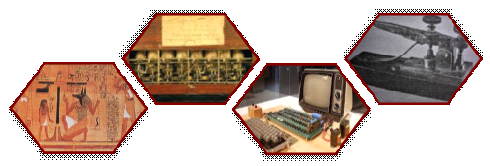



Intellectual revolution advances modern science and scientific thinking
The essence of how science and technology contribute to society is the creation of new knowledge, and then utilization of that knowledge to boost the prosperity of human lives, and to solve the various issues facing society. With the developments in mathematics, physics, astronomy, biology, and chemistry, the society has now a wider view and perspective on how the world works and begins. The main objective of science has been elucidation of how nature is put together and operates, and it has developed as a separate entity from technology. Significantly, the concept of linking scientific results to technology for utilization in society became prevalent after around 1850, which is when a chemical industry began to develop based on utilization of knowledge about chemistry, and electrical technologies arose based on knowledge about electromagnetism. Science also has become a major influence on people’s sense of values, changing the nature of society and becoming the engine driving society’s progress from the viewpoint of civilization.
Intellectual Revolutions is the Key in Understanding How Society is
Transformed by Science and Technology
Man’s hunger for knowledge is never ending. This only tells that intellectual revolutions is a continuous process of development to achieve the needs of society. It changes the people’s worldview by discrediting old religious and classical presuppositions and showing how an increasingly complex system of natural rules and interactions governed the physical world. These involves critical-thinking, evaluation, and creating appropriate rules for equal opportunity. The intellectual revolutions are necessary as it creates new knowledge, utilization and understanding as well as solving various issues facing in the society.
Three Controversies During the Intellectual Revolutions

Geocentrism is the belief that the Earth is fixed at the center of the Universe. Geocentrists accept that the earth is round. Before the 16th century most people believed in the theory of geocentrism. From Earth, it looks like the Sun and stars are moving across the sky.

Heliocentrism is the astronomical model in which the Earth and planets revolve around the Sun at the center of the Universe. Heliocentrism was opposed to geocentrism, which placed the Earth at the center

Darwinism is a theory of biological evolution developed by the English naturalist Charles Darwin (1809–1882) and others, stating that all species of organisms arise and develop through the natural selection of small, inherited variations that increase the individual's ability to compete, survive, and reproduce.
Differences among the Four Ages in Information Technology
The device or equipment used in communication and interpreting their message.
The means of giving information and how do information being shared to others. (e.g. use of letters, numbers, symbols, simple pictures etc.)
The function of the different instruments or technologies invented in each era greatly improves the means of communication and sharing of information.
The channel being used to relay information.

PRE-MECHANICAL (3000 B.C. and 1450 A.D.) The pre-mechanical age was the earliest era of information technology. Information and communication takes place in illustrating or drawing symbols which can be found in terrains and caves. Petroglyphs was used as their means of communication by using pictures. As time pass by, information become present in rags, papyrus then on paper.
MECHANICAL (1450 and 1840) The mechanical age is the root of ancestry of the current technology we are using. Computations emerge having the basic operations such as addition, subtraction, multiplication and division. This can be performed by the mechanical computer named Pascaline.
ELECTRO-MECHANICAL (1840-1940) Electro-mechanical age leads the telecommunications to emerge. Morse code, telephone, radio and many more began to operate in this era. These technologies are fundamentals in information technology revolution. The first ever computer was used in weaponry.
ELECTRONIC In Electronic age, information technology has improved and became more reliable compared to previous era. Electronic switches have changed the face of information relay in this age and reliability has levelled up. This technology has able perform better than that of the technologies in the previous age
Important Role of ICT in Innovation
Information and communication technology ICT play an important role in communication. ICT becomes the root of economic improvement for a long time. ICT contributes to different technological progress and productivity growth. This were used by different firms and sectors in organizing transnational networks in response to international competition and the increasing need in strategic interaction with others. ICT caused the ever spreading process of globalization.. Information and communication technologies (ICT)based innovations and applications have become major drivers of enhanced organizational performance, economic growth, and social change. The competitiveness of an economy depends on the productivity level of their ICT sector. The higher the productivity of the ICT sector, the higher the power of economic competitiveness of a country. Higher economic competitiveness will lead to greater innovations of different technologies and practices in the country.






